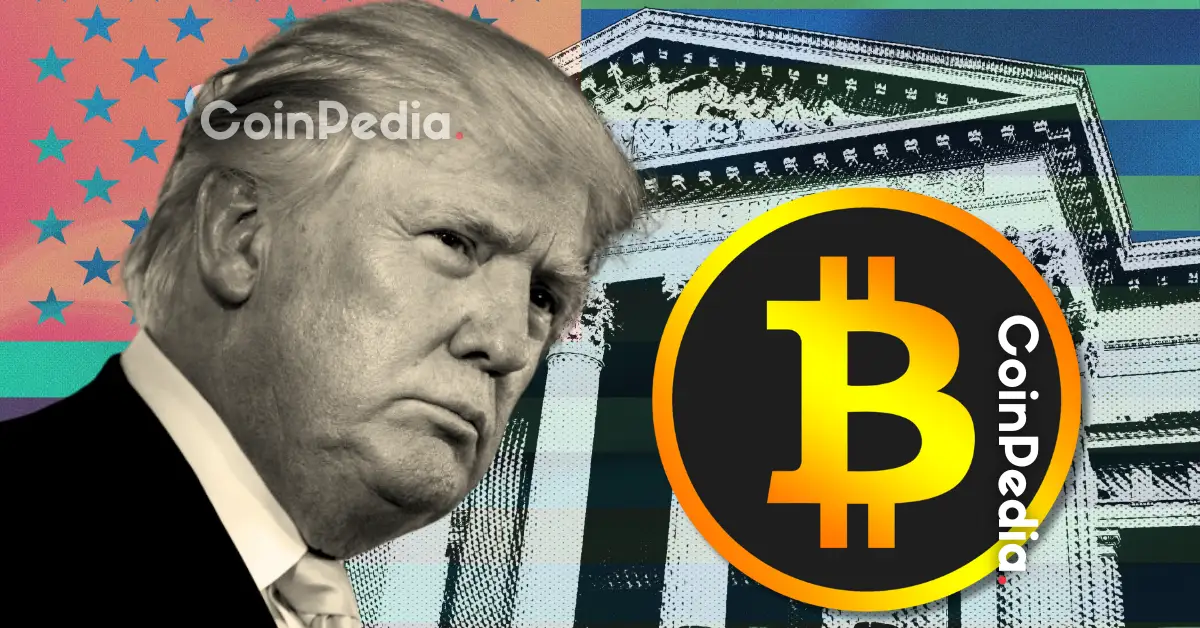The Enigma of America’s Digital Vault: A Deep Dive into the U.S. Crypto Reserve
Introduction: A Digital Revolution or a Financial Fiasco?
The concept of a U.S. Crypto Reserve, particularly one spearheaded by a figure as polarizing as Donald Trump, has ignited a firestorm of debate, intrigue, and confusion. Is this a stroke of genius that positions America at the forefront of the digital economy, or is it a recipe for disaster, fraught with risks of centralization, market manipulation, and regulatory nightmares? To understand the implications, we must unpack this digital Pandora’s Box and explore the potential outcomes.
A Reserve of What, Exactly?
Bitcoin Maximalism vs. Diversification
The first and perhaps most crucial question is: what would constitute this “U.S. Crypto Reserve?” While the term “Strategic Bitcoin Reserve” surfaces frequently, the actual contents appear to be a moving target. Some reports suggest a Bitcoin-centric approach, while others hint at a diversified portfolio including XRP, SOL, and ADA, a selection that has already raised eyebrows and fueled speculation about potential conflicts of interest or strategic allegiances.
Bitcoin maximalists argue that Bitcoin’s decentralized nature, scarcity, and proven track record make it the only viable option for a sovereign reserve. Diversification, they contend, introduces unnecessary complexity, dilutes the reserve’s core purpose, and exposes it to the volatility of altcoins, many of which lack Bitcoin’s fundamental strengths.
On the other hand, proponents of a diversified reserve argue that it allows the U.S. to capitalize on the potential of emerging blockchain technologies and to hedge against the risks associated with relying solely on Bitcoin. However, this approach opens the door to accusations of favoritism, market manipulation, and the inherent risks of investing in less-established and often more volatile cryptocurrencies. The inclusion of “lesser-known tokens,” as one report puts it, only amplifies these concerns.
The Allure (and Peril) of Altcoins
The allure of altcoins lies in their potential for innovation and growth. Many of these cryptocurrencies are built on unique blockchain technologies that could revolutionize various industries. However, the peril lies in their volatility and lack of regulatory clarity. The U.S. government’s involvement in these markets could either stabilize or destabilize them, depending on the approach taken.
The Ghost in the Machine: Funding and Acquisition
Seized Assets: A Double-Edged Sword
One potential source of funding lies in the seizure of crypto assets from illicit activities. While this might seem like a politically palatable option, it raises questions about the scale and consistency of such seizures. Can they truly generate enough value to build a substantial reserve? Moreover, the legal complexities surrounding asset forfeiture could lead to protracted battles and uncertain outcomes.
Taxpayer Funds: A Political Minefield
The idea of using taxpayer money to directly purchase cryptocurrencies is likely to face fierce opposition from both sides of the political spectrum. Critics would argue that it is an irresponsible use of public funds, particularly given the volatile nature of the crypto market. It also raises fundamental questions about government intervention in the market and the potential for creating moral hazard.
Debt Acquisition: Kicking the Can Down the Road
Another option involves issuing new debt to finance the acquisition of crypto assets. This approach might be more palatable in the short term, but it merely defers the problem to future generations. Moreover, it raises concerns about the long-term sustainability of the reserve and the potential for exacerbating the national debt.
Regulatory Quagmire: Navigating the Uncharted Waters
SEC’s Role: Enforcement vs. Innovation
The Securities and Exchange Commission (SEC) has taken a relatively aggressive stance towards the crypto industry, focusing primarily on enforcement actions against unregistered securities offerings. While the White House report urges the SEC to take action even without new laws, this approach risks stifling innovation and driving crypto businesses overseas.
Congressional Action: The Need for Clarity
Ultimately, Congress needs to step in and provide a clear and comprehensive regulatory framework for cryptocurrencies. This would provide much-needed clarity for businesses, investors, and regulators alike. However, the deeply partisan nature of Congress makes it difficult to reach a consensus on such a complex and controversial issue.
The Specter of Centralization
Perhaps the most profound concern is the potential for a U.S. Crypto Reserve to lead to centralization and institutional control over Bitcoin and other cryptocurrencies. Bitcoin’s core value proposition lies in its decentralized nature, which makes it resistant to censorship and manipulation. If the U.S. government amasses a significant portion of the Bitcoin supply, it could potentially exert undue influence over the network, undermining its fundamental principles.
Trump’s Pro-Crypto Pivot: A Calculated Move?
Donald Trump’s apparent shift towards a pro-crypto stance has surprised many observers, given his past skepticism towards digital currencies. Some speculate that this is a calculated move to appeal to a younger, more tech-savvy electorate. Others suggest that he sees the potential for the U.S. to become a global leader in the crypto industry, creating jobs and boosting economic growth. Whatever the motivation, Trump’s support for a U.S. Crypto Reserve has undoubtedly injected a new level of political energy into the debate.
Conclusion: A High-Stakes Gamble
The idea of a U.S. Crypto Reserve is a complex and multifaceted issue with potentially far-reaching consequences. While it could position America at the forefront of the digital economy, it also carries significant risks, including market manipulation, regulatory uncertainty, and the erosion of Bitcoin’s decentralized principles. As the U.S. navigates this uncharted territory, it must proceed with caution, balancing the potential benefits with the inherent risks. The future of America’s digital vault, and perhaps the future of cryptocurrency itself, hangs in the balance.





